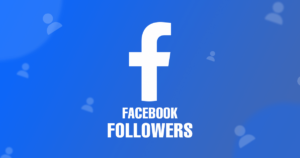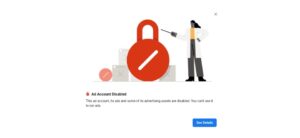
Struggling to grab new customers? Running lead generation ads on Facebook could be your solution. With over 2 billion active users, Facebook is a goldmine for reaching your ideal audience. These ads can capture valuable customer information right from the platform, making it easier than ever to expand your reach and grow your business. In this post, you’ll discover how to set up these ads, target the right audience, and optimize your campaigns for the best results. Get ready to turn Facebook followers into loyal customers.
Understanding Lead Generation Ads On Facebook
Navigating the digital marketing landscape can feel like exploring a city without a map. Luckily, Facebook’s lead generation ads are here to guide marketers straight to potential customers. Let’s explore how these specialized ads work and why they’re a powerful tool for reaching audiences where they spend so much of their time—right on Facebook.
What Are Lead Generation Ads?
So, what exactly are lead generation ads? Unlike traditional Facebook ads that aim to boost likes or shares, lead generation ads are designed to gather details from users, such as their email addresses, without them having to leave the platform. This makes the process smooth and more likely to result in a conversion. Imagine it like a virtual clipboard: Facebook holds it out, and the customer just writes down their info.
These ads are a gold mine for businesses because:
- Direct Connection: They cut out the extra steps. Users can respond without being redirected away from what they’re doing.
- Valuable Insights: They provide businesses with crucial information about potential customers’ preferences and needs.
- Increased Engagement: By being seamless and quick, users are more inclined to share details, boosting the overall engagement rate.
How Lead Generation Ads Work
Now, let’s dive into the mechanics. Lead generation ads on Facebook capture leads directly on the platform, making it incredibly convenient for both the business and the user. Here’s how it typically unfolds:
- Creating the Ad: Businesses design an ad using Facebook’s ad manager. The ad includes a call-to-action, like “Sign Up” or “Get Quote.”
- Instant Form Experience: When users click on the ad, an instant form pops up. This form is pre-filled with the user’s Facebook information, like name and email, which makes filling it out a breeze.
- Submission: After the form is filled, the user can submit it without ever leaving Facebook. It’s quick, it’s simple, and it keeps users engaged on the platform.
These ads bridge the gap between curiosity and conversion effortlessly, much like a well-rehearsed dance. They are essential for businesses aiming to grow their audience base while maintaining a fluid user experience.
In a nutshell, lead generation ads on Facebook are like an open invitation to potential customers, making it simple for them to show interest and for businesses to respond promptly. By understanding and effectively using this tool, companies can expand their reach and cultivate lasting customer relationships.
Setting Up Your Lead Generation Campaign
Creating a successful lead generation ad on Facebook is like opening the door to new opportunities for your business. It’s about making sure that door is easy to find and walk through. Let’s talk about how to set up your campaign so you can start welcoming potential customers.
Creating a Facebook Business Account
Before you can dive into Facebook ads, you’ll need a Facebook Business Account. This is your home base for managing your presence on the platform. Here’s how to get started if you don’t have one yet:
- Go to business.facebook.com and click on “Create Account.”
- Fill in your business name, email, and personal Facebook account details. Don’t worry; your personal info stays private.
- Follow the on-screen instructions to complete the setup. This might include adding payment methods and business details.
With your business account set up, you’re ready to tap into Facebook’s advertising power.
Choosing Your Campaign Objective
Once your business account is ready, it’s time to let Facebook know what you want to achieve. Here’s how to set ‘Lead Generation’ as your campaign objective:
- Open Ads Manager from your Facebook Business Account.
- Click on “Create” to start a new campaign.
- Select ‘Lead Generation’ from the list of campaign objectives. This tells Facebook you want to collect information from potential customers.
This step is crucial because it aligns Facebook’s tools with your goals, allowing you to gather leads more effectively.
Defining Your Target Audience
Imagine speaking to a crowd where only half the people understand your language. To avoid this, define your target audience clearly. Here’s how you can do it using Facebook’s robust targeting options:
- Demographics: Select age, gender, and location to match the profile of your ideal lead.
- Interests and Behaviors: Narrow down your approach by picking hobbies, favorite brands, or behaviors.
- Custom Audiences: Use data you’ve collected outside of Facebook to target people who’ve already interacted with your business.
Tailoring your audience means you’re speaking directly to the people most likely to convert, maximizing every dollar you spend.
Budgeting and Scheduling
Think of your ad budget and schedule like planting seeds. The right investment and timing can help your campaign blossom. Here are some tips:
- Set a Daily or Lifetime Budget: Decide how much to spend per day or for the entire campaign.
- Choose Your Schedule: Run ads continuously or set start/end dates to match special events or promotions.
- Consider Peak Times: Schedule ads when your audience is most active for better engagement.
These decisions ensure you get the most bang for your buck and that your ads reach potential leads at the best times.
By following these steps, you can set up a lead generation campaign that not only reaches your audience but engages and converts them efficiently. Let’s get you on the path to generating quality leads with Facebook!
Creating Effective Lead Generation Forms
When it comes to running Lead Generation Ads On Facebook, crafting an effective lead form is the golden key to success. A well-designed form can capture potential customers’ information smoothly while keeping them engaged. Let’s dig into what makes a stellar lead generation form and how incentives can play a role in boosting your submissions.
Designing Your Form
A good lead form is like a friendly conversation—it flows naturally and doesn’t overwhelm. Here are some critical elements to consider:
- Essential Fields Only: Keep it simple. Ask for only what you really need. Too many fields can feel like a chore. Names, emails, and maybe a phone number are usually enough.
- Clear Call-to-Action (CTA): Make your intent clear. Use active language that guides the user. Words like “Get Started” or “Join Now” can encourage action.
- User-Friendly Design: Go for a clean, modern look. Use ample white space to avoid crowding. Mobile optimization is crucial since many users access Facebook on their phones.
- Visuals and Branding: Make sure your form reflects your brand. Consistent colors, logos, and other elements reinforce trust.
Think of your form as a first handshake—make it firm yet friendly to leave a positive impression.
Incentives for Leads
Why should someone give you their information? Incentives can tip the scales in your favor. Offering something valuable in return can enhance your lead generation efforts:
- Discounts and Offers: Who can resist a good deal? Promising a discount on their first purchase can be an enticing carrot that attracts more leads.
- Free Trials or Samples: Let them sample what you offer. A free trial of your service or product can be a strong motivator.
- Exclusive Content: Offer access to exclusive content like eBooks, webinars, or guides. It makes leads feel valued and turns curiosity into commitment.
By understanding what drives your audience and presenting a tangible benefit, you’ll see more people raising their hands and filling out those forms. Think of incentives as the fuel that powers your lead generation engine, helping it run faster and smoother on the track to success.
Analyzing and Optimizing Your Campaign
Running lead generation ads on Facebook isn’t just about setting them up and hoping they perform. It’s crucial to dive into the data from your campaign to see what works and what’s just burning your budget. If you’ve ever planted a garden, you know the work isn’t over when seeds go in the ground. Monitoring conditions and making sure everything’s growing as it should is key. The same goes for your Facebook ad campaigns.
Key Metrics to Track
When measuring the success of your lead generation ads on Facebook, certain metrics act as your guiding compass. Keeping an eye on these numbers can make the difference between a campaign that thrives and one that flops:
- Click-Through Rate (CTR): This shows how many people saw your ad and clicked on it. A higher CTR indicates your ad is grabbing attention.
- Conversion Rate: This tells you the percentage of clicks that lead to meaningful actions, like filling out a form. A low rate could mean your landing page needs improvement.
- Cost Per Lead (CPL): It’s the amount you spend to get a lead. Lowering CPL means more budget for more leads.
- Relevance Score: Facebook rates how well your ad is resonating with your audience. A high score can lower costs and increase ad delivery.
- Return on Ad Spend (ROAS): This metric shows the revenue gained from each dollar spent. It’s like figuring out your return from planting seeds – you want more fruits than effort.
By regularly tracking these metrics, you can adjust and finetune your campaigns for better results.
A/B Testing Your Ads
Ever wonder why the same ad sometimes performs differently from one campaign to another? That’s where A/B testing shines. It’s like taste-testing ice cream flavors: you compare two versions to see which one people prefer.
A/B testing is a method used to compare two versions of an ad to determine which one performs better. Here’s how you can A/B test your Facebook ads:
- Choose One Variable to Test: Start by testing one element at a time, such as ad copy, images, headlines, or call-to-action buttons. This way, you clearly see what change makes the difference.
- Create Two Versions (A and B): Develop two ads with only one varying element. This lets you pinpoint what’s affecting performance.
- Run Both Ads Simultaneously: Deploy them at the same time to prevent external factors from skewing results due to different timeframes.
- Analyze the Results: After the test period, compare metrics like CTR, conversion rate, and CPL to determine which version was more effective.
- Implement the Best Performing Version: Use the winning ad as your template and continue to optimize by testing other elements.
By continuously experimenting with your ad elements, you can refine your approach to targeting, creatives, and form completion, ensuring your lead generation ads on Facebook are always in top shape.
Remember, analyzing and optimizing your campaigns isn’t a one-time task—it’s an ongoing effort. Keep your eyes on the data and your strategy adaptable, and you’ll see your campaigns flourish like a well-tended garden.
Best Practices for Lead Generation Ads On Facebook
Running successful lead generation ads on Facebook isn’t just about catchy headlines and appealing visuals. It’s about understanding how to connect with your audience and ensuring that your efforts bring back valuable leads. By focusing on strategies like remarketing and lead quality, you can transform casual browsers into committed customers.
Leveraging Remarketing
Ever noticed how a pair of shoes you browsed for online follows you on social media? That’s remarketing in action. It’s a smart strategy for getting people back to your ad. Think of it like gently tapping someone on the shoulder to remind them of something they were interested in. Remarketing is crucial for engaging users who may have shown interest but didn’t convert the first time.
- Stay on their radar: Keep your brand in front of those who interacted with your ads.
- Build trust: Showing your ad repeatedly helps build familiarity, which can turn curiosity into trust.
- Target specific interactions: Customize ads based on previous user behavior, like visiting a product page but not purchasing.
Maintaining Lead Quality
Not all leads are created equal. While numbers are important, quality matters more. Imagine fishing with a net that catches everything, including unwanted debris. You want to filter out the noise and grab the fish worth keeping. To maintain lead quality, it’s essential to attract the right audience who are genuinely interested in your products or services.
Here’s how you can ensure you’re catching the best fish with your lead generation ads on Facebook:
- Clear Targeting: Use Facebook’s robust targeting tools to reach people who fit your ideal customer profile.
- Compelling Offers: Provide value in exchange for their contact info, like a free ebook or a discount.
- Engaging Visuals: Use eye-catching images or videos that reflect your brand and message.
- Refine Ad Copy: Keep the message clear and focused on why someone should act now.
- Set Qualifying Questions: Use lead forms to ask questions that help gauge interest and fit.
By focusing on these practices, you’re not just collecting leads. You’re growing a list of potential customers who are more likely to convert, ensuring your efforts pay off in real results.
Conclusion
Mastering lead generation ads on Facebook can energize your business growth. By targeting your audience effectively and crafting engaging content, the potential to capture valuable leads is immense.
Implement these strategies to refine your approach and watch your business expand.
Consider starting a campaign today to see firsthand how it can transform your engagement rates. What new audiences could you reach with an optimized Facebook ad?
Your next success story might just be a click away. Take action now and elevate your marketing efforts to the next level.





